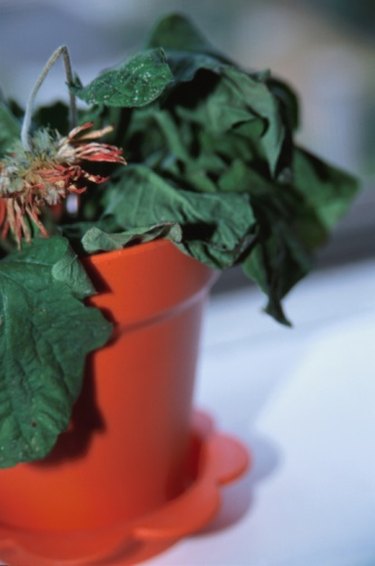
Keeping plants healthy requires knowing when they have had too much or not enough water. The variety of the plant, soil conditions and sun conditions all play a part in how much water a plant needs. Plants located in a humid environment may need less water than those located in dryer conditions. Indoor plants have differing needs than those located outdoors.
Step 1
Stick the tip of your index finger 1 inch into the soil of wilted plants. If the soil crumbles and feels dry, the plant needs water. If the soil feels soggy, the plant has been over-watered.
Video of the Day
Step 2
Examine the plant leaves for drooping and a yellowish color. Drooping and yellow leaves normally mean the plant's roots have rotted from excessive watering.
Step 3
Inspect the plant for brittle and brown leaves. This symptom means under-watering has occurred, causing the roots to die. If the soil does not appear dry, rock salt from a water softener may be the cause of brown leaves.
Step 4
Check for dropped leaves. Over-watered plants have limp leaves that fall from the plant, while under-watered plants lose brittle leaves.
Tip
Before watering plants, check the soil with your fingertip. If the soil remains soggy, do not water, and check the soil the next day. For dry plants, water them slowly, allowing the water to soak into the soil. Use a watering can with a long, narrow spout so it water can be distributed directly into the plant's soil.
Video of the Day